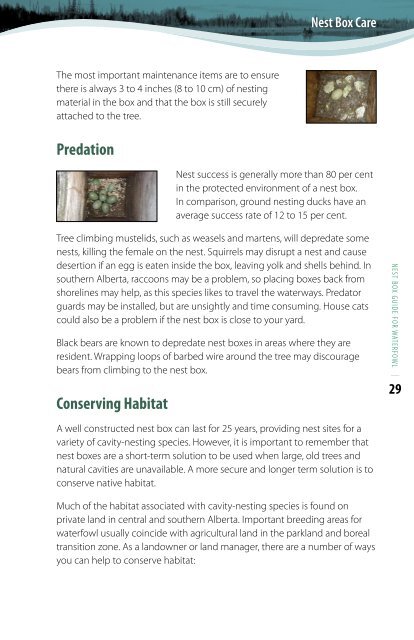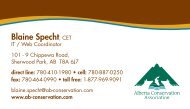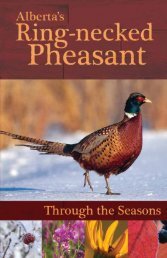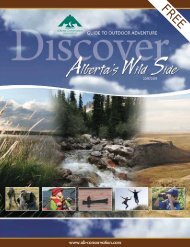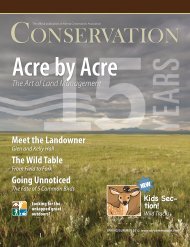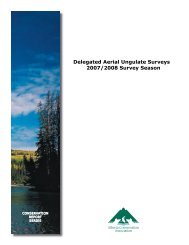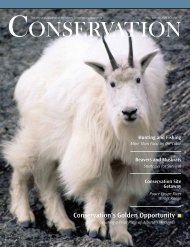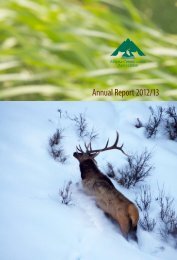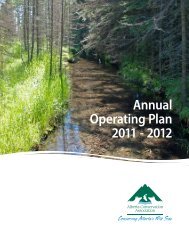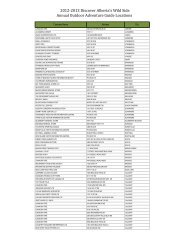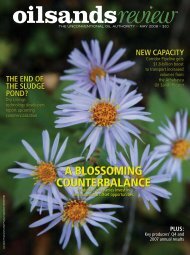Nest Box Guide For Waterfowl - Alberta Conservation Association
Nest Box Guide For Waterfowl - Alberta Conservation Association
Nest Box Guide For Waterfowl - Alberta Conservation Association
- No tags were found...
Create successful ePaper yourself
Turn your PDF publications into a flip-book with our unique Google optimized e-Paper software.
<strong>Nest</strong> <strong>Box</strong> CareThe most important maintenance items are to ensurethere is always 3 to 4 inches (8 to 10 cm) of nestingmaterial in the box and that the box is still securelyattached to the tree.Predation<strong>Nest</strong> success is generally more than 80 per centin the protected environment of a nest box.In comparison, ground nesting ducks have anaverage success rate of 12 to 15 per cent.Tree climbing mustelids, such as weasels and martens, will depredate somenests, killing the female on the nest. Squirrels may disrupt a nest and causedesertion if an egg is eaten inside the box, leaving yolk and shells behind. Insouthern <strong>Alberta</strong>, raccoons may be a problem, so placing boxes back fromshorelines may help, as this species likes to travel the waterways. Predatorguards may be installed, but are unsightly and time consuming. House catscould also be a problem if the nest box is close to your yard.Black bears are known to depredate nest boxes in areas where they areresident. Wrapping loops of barbed wire around the tree may discouragebears from climbing to the nest box.Conserving HabitatNEST BOX GUIDE FOR WATERFOWL |29A well constructed nest box can last for 25 years, providing nest sites for avariety of cavity-nesting species. However, it is important to remember thatnest boxes are a short-term solution to be used when large, old trees andnatural cavities are unavailable. A more secure and longer term solution is toconserve native habitat.Much of the habitat associated with cavity-nesting species is found onprivate land in central and southern <strong>Alberta</strong>. Important breeding areas forwaterfowl usually coincide with agricultural land in the parkland and borealtransition zone. As a landowner or land manager, there are a number of waysyou can help to conserve habitat:


